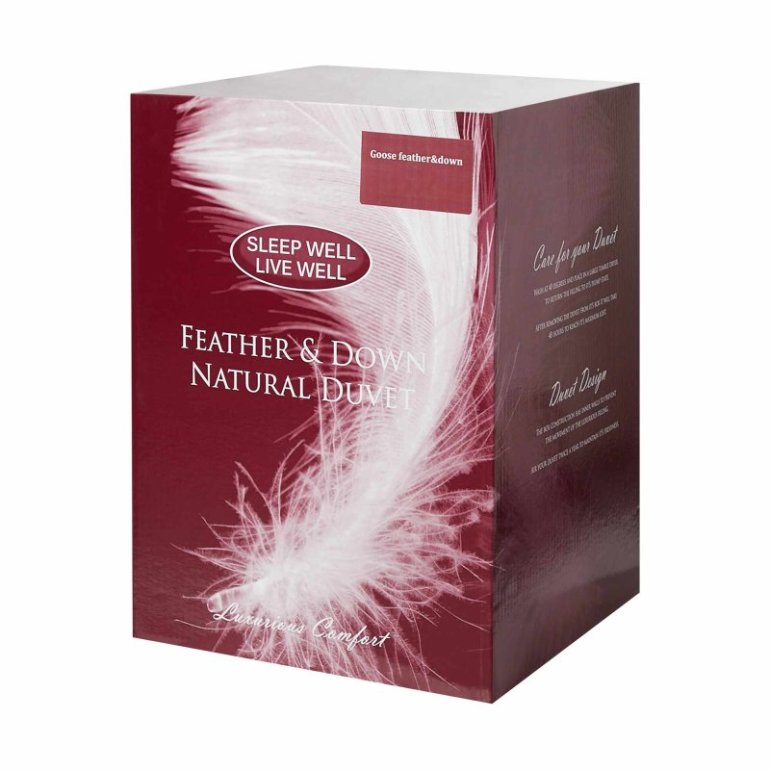Step-By-Step: How To Pick The Perfect Duvet
There’s nothing quite like sinking into a cloud-like bed at the end of a long day — and at the heart of that comfort is your duvet. Whether you’re building your bed from scratch or upgrading your current setup, choosing the right duvet can make a world of difference in your sleep quality, room aesthetics, and even your allergies.
With so many materials, fills, and sustainability claims out there, it’s easy to feel overwhelmed. So, let’s simplify the process. Here's the Meubles step-by-step guide to finding the perfect duvet for your sleep style, lifestyle, and values.
Step 1: Choose your Duvet Filling
Start by understanding the major types of duvet fillings. They’ll determine how warm, breathable, and long-lasting your duvet is.
Down Duvets
- What it is: Made from the soft, fluffy undercoating of ducks or geese.
- Pros:
- Ultra-lightweight yet warm
- Excellent insulation
- Long-lasting when well cared for
- Cons:
- Expensive
- Can trigger allergies
- Ethical concerns
![]()
![]()
Feather & Down Duvets
- What it is: A mix of feathers (typically from the wings) and down.
- Pros:
- More affordable than pure down
- Still offers good warmth
- Heavier feel (some people prefer this)
- Cons:
- Less fluffy than down
- May be noisier or less breathable
- Needs frequent fluffing to maintain loft
Cotton Duvets
- What it is: Filled with natural cotton fibres, often encased in a cotton shell. Sometimes quilted for even distribution.
- Pros:
- Naturally breathable and moisture-wicking
- Hypoallergenic and great for sensitive skin
- Ideal for warmer climates or summer use
- Cons:
- Not as insulating for cold winters
- Can feel heavier without added loft
- May compress over time and require regular airing out
![]()
![]()
Synthetic Duvets (Polyester or Microfibre)
- What it is: Filled with man-made fibres designed to mimic the feel of natural down.
- Pros:
- Hypoallergenic and suitable for sensitive sleepers
- Affordable
- Easy to wash and care for
- Cons:
- May not breathe as well
- Less durable over time
- Can be less insulating in colder climates
Step 2: Choose your Tog Rating (aka Warmth Level)
Tog ratings help determine how warm a duvet will feel. Choose based on your sleep preferences, bed set up (do you like using extra blankets?), climate, and whether you’re a hot or cold sleeper.
- 4.5 tog - Best for summer or warm climates. Try the Neuhaus Topcool Temperature Control Duvet.
- 7.5 - 10.5 tog - Ideal for spring and autumn.
- 12 - 15 tog - Perfect for winter or chilly homes. Meubles Finese Microfibre Embossed Duvet is the duvet for you.
- All-season duvets – Usually a 4.5 and a 9 tog that can be clipped together - ideal for year-round use. The Meubles Hotel Collection Majestic 100% Cotton All Seasons Duvet is the perfect option to keep you cosy all year round.
Step 3: Consider your Sleep Needs & Lifestyle
Ask yourself the following:
- Do you have allergies or asthma? → Look for hypoallergenic duvets (often synthetic or treated down) and OEKO-TEX®-certified materials.
- Do you overheat at night? → Choose temperature controlled duvets that can help regulate body temperature while you sleep.
- Do you need easy-care bedding? → Go for machine-washable synthetic options.
- Do you want a heavier or lighter feel? → Feather and down = weightier, Down-only = fluffier and lighter, Synthetic = somewhere in between.
Step 4: Pick the Right Duvet Size
Always match your duvet size to your bed size — but here’s a tip: for a more luxurious, hotel-style look, size up. For example:
- Double bed → Use a King-size duvet for extra drape and coverage
- Single bed → Use a Double duvet for a tucked-in, cocooned effect
Step 5: Don't Forget Sustainability & Ethical Choices
If you care about reducing your environmental footprint, you’re in luck — bedding has come a long way.
Sustainable duvet options include:
- Recycled polyester duvets - Made from recycled plastic bottles
- Organic cotton casing - Grown without harmful chemicals
- Ethically-sourced down - Look for certifications like RDS (Responsible Down Standard) or Down pass
- Eco-fill innovations - Some companies use bamboo fibre, eucalyptus (Tencel), or wool as natural alternatives
Step 6: How Often Do You Replace a Duvet?
Even the highest-quality duvet has a lifespan.
- Down or feather: Replace every 8–10 years
- Synthetic: Replace every 5–7 years
Clues it’s time to replace your duvet:
- It feels lumpy or flat, no matter how much you shake it
- You wake up sneezing or congested (dust mites love old duvets)
- There are stains or wear that can’t be cleaned or repaired
Step 7: Allergen-Free Duvet Options
If you suffer from allergies, avoid feather or down unless they’re treated and labelled as hypoallergenic. Better options include:
- Microfibre or hollowfibre synthetic duvets
- Dust mite-resistant covers
- Bamboo or eucalyptus fibre duvets – Naturally antimicrobial and breathable
- Wool duvets – A natural alternative that resists allergens and regulates temperature
Look for certifications like:
- OEKO-TEX® Standard 100 (free from harmful chemicals)
- Asthma & Allergy Foundation approved
- Global Organic Textile Standard (GOTS) for organic materials
The Quick Duvet Checklist
- Choose your filling: Down, feather & down, or synthetic
- Match your tog rating to your climate and sleep temperature
- Consider allergies, ease of care, and sustainability
- Replace every 5–10 years depending on material
- Invest in hypoallergenic and eco-conscious options if needed
Your duvet is more than just a bed cover — it’s your nightly cocoon, your comfort zone, and a key to deeper, better rest. At Meubles you’ll be able to choose a duvet that suits your lifestyle and supports your sleep goals.
Sleep well, live better — one duvet at a time.
-
Posted by Aisling
17th August 2025





